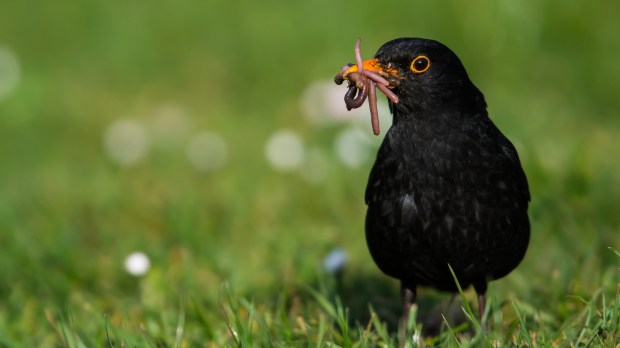Lenten Campaign 2025
This content is free of charge, as are all our articles.
Support us with a donation that is tax-deductible and enable us to continue to reach millions of readers.
The intelligibility of the universe has always caused a sense of wonder and awe in men and women throughout history. In his Introduction to Christianity, the late Benedict XVI, as Joseph Ratzinger, articulated the significance of its intelligibility this way: “Christian faith in God means first the decision in favor of the primacy of the logos against mere matter.” He calls the logos the “encompassing power of all being” and declared that thought is the innermost structure of being.
Purpose is essential for living beings
Since purpose implies intelligence, it is no wonder then that end-directed or purposeful activity is found throughout the natural world. Many in the scientific world deny that such intelligent activity exists. They use terms such as “instinct,” reflexive behavior, or chemical signaling. However, according to Jacques Monod, a biochemist and 1965 Nobel Prize winner in Physiology and Medicine, “a purpose or project is essential to the very definition of living beings.”
Animals have built-in behaviors that govern much of their activity, but they modify these behaviors in response to changes in the environment or the needs they are trying to satisfy. According to Theodosius Dobzhansky, a geneticist and evolutionary theorist from the last century:
It would make no sense to talk of the purpose of adaptation of stars, mountains, or the laws of physics [but] adaptedness of living beings is too obvious to be overlooked. … Living beings have an internal, or natural, teleology.
Examples from the natural world are plentiful, but we will look at two.
Purpose in blackbirds
Blackbirds use foraging techniques to find food and use their beaks to collect the food–but if there are young birds to feed, they do not automatically ingest the worm: they hold it in their mouths until they return to the nest. So the behavior changes depending on the end or goal to be achieved.
Purpose in flatworms
Even simpler organisms exhibit end-directed activity. Flatworms reflexively turn over if turned upside down. It does this with a spiral twist of its body so that the ventral side of the head attaches to a surface, and the body flips over. Because these worms are able to regenerate themselves if cut, even a small piece is able to right itself, but using a completely different mechanism.
An organism is not responding to a goal that is “out there.” According to Steve Talbott in his article Evolution and the Purposes of Life, purposeful activity in a living organism is best described as giving expression to the wholeness of its own nature. The organism is an organizing center for all activity, including the engagement of its DNA in its various cells, tissues, and in its responses to changes in the environment. This “center” is responsible for coordinating the entire repertoire of responses.
Purpose in human activity
Closer to our time and describing purpose in human activity, cognitive scientist Zenon Pylyshyn in Computation and Cognition, gives an interesting example. He describes a pedestrian who witnesses a car crash and determines that someone is injured. He runs to a phone booth and dials 91. Pylyshyn asks the reader: What will happen next? We all would respond, “He would dial another 1!” This proves his point that context and an ability to perceive meaning within that context is essential.
[T]he pedestrian perceived the collision, recognized it as an event that is classified as an accident, inferred that there might be an injury, went over to determine whether anyone had in fact been injured, deduced from what he saw that that might be the case, decided to seek help based on the knowledge he possessed of the proper treatment of injured persons, noticed a telephone booth nearby, recalled the number for emergencies, and dialed the number with the intention of seeking help. [Italics in original.]
Explore purpose with a new resource
A new resource to explore the intelligent end-directed behavior found in the natural world is now available. Purposeful Universe is a project developed under the leadership of Fr. Robert Spitzer, SJ, and funded by the Templeton Foundation. The Purposeful Universe website states that,
The Purposeful Universe seeks to explore and present, through award winning videos, the abundant order in nature that funnels biological systems toward increasing levels of complexity and sophistication—suggesting that human life is the purposeful outcome of a complex, ordered system.
Wanting to dispel the notion that the natural development of species is driven by blind and random forces, the videos, articles, and posts reveal the gloriously intelligible activity of plants, animals, and even cells. The science behind star, planet, and galaxy formations will fill you with awe. There are videos and posts on the latest developments and discoveries in cosmology, biological evolution, purpose (including its meaning for humans), and consciousness.
For a deeper look at the science behind purpose, you can read this latest blog post at Purposeful Universe.


